-- Chen Jian, a 31-year-old Chinese train driver who operates locomotives on the China-Laos Railway under construction, is one of the many Chinese workers overcoming difficulties and working there around the clock amid the COVID-19 pandemic.
-- In the jungles of southwestern Cambodia's Koh Kong Province, the Chinese-built Lower Stung Russei Chrum hydropower station also adopted strict epidemic prevention measures for safety operation.
-- In Indonesia, Zhang Kelei, project manager of Sinohudro Project Department of the Jakarta-Bandung High Speed Railway, said the department "has asked everyone to wear masks and reduce contact." The construction of the railway has made great progress amid the epidemic.
-- "The Belt and Road Initiative plan may restart progressively and remains well-received in its partner countries," Cambodian Princess Norodom Arunrasmy said.
by Xinhua writers Zhang Jianhua, Mao Pengfei and Yu Qianliang
VIENTIANE/PHNOM PENH/JAKARTA, June 2 (Xinhua) -- Although the COVID-19 pandemic has severely disrupted life and production all around the world, the construction of the Belt and Road projects continues with protective measures in Laos, Cambodia and Indonesia.
Experts believe that at this special period the Belt and Road Initiative (BRI), which focuses on infrastructure projects and trade exchanges, can facilitate the restoration of the national economies of many countries in the world.
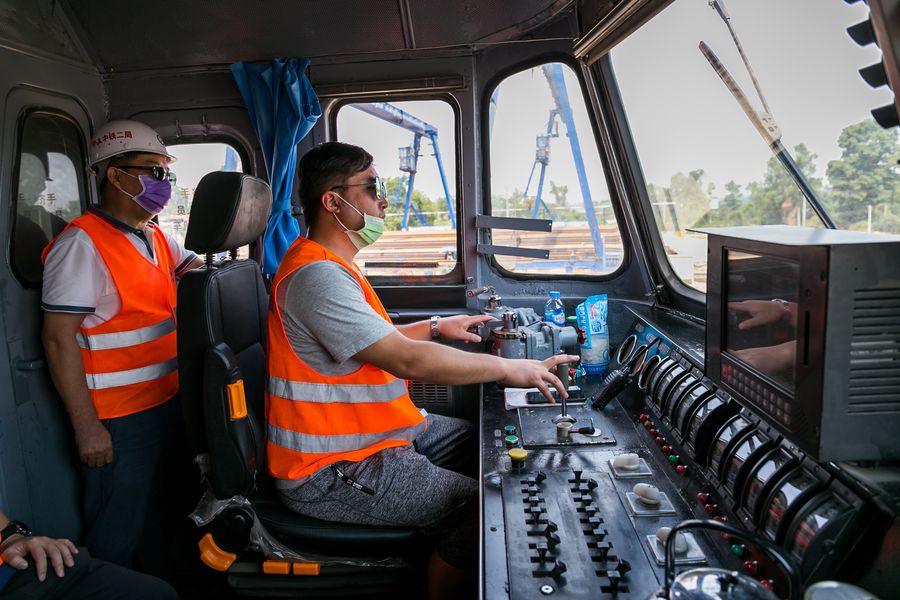
Chen Jian from the China Railway No.2 Engineering Group operates an engineering locomotive on the China-Laos Railway on the outskirts of Lao capital Vientiane, May 7, 2020. (Photo by Kaikeo Saiyasane/Xinhua)
STRICT PREVENTIVE MEASURES
"I have driven trains traveling around China, but this is the first time I drive a train abroad," said 31-year-old Chinese train driver Chen Jian in an engineering train loaded with track ballast heading toward a construction site on the outskirts of Vientiane, the Lao capital.
Chen, who operates locomotives on the China-Laos Railway under construction, is one of the many Chinese workers overcoming difficulties and working there around the clock amid the COVID-19 pandemic.
With strict precautionary and preventive measures, they have joined hands with local workers and engineers to speed up the construction of the railway project.
"In order to keep the construction of the China-Laos Railway on schedule, we are implementing comprehensive control measures to ensure progress, quality and safety," said Hu Bin, railing project manager of the China Railway No. 2 Engineering Group (CREC-2), which is undertaking the railway's railing work.
According to Lei Chao, Hu's colleague, with nearly half of the staff absent, "everyone here is working in multiple roles."
"We must ensure the health of our available staff. We have actively carried out epidemic prevention in Laos, and formed medical teams along the railway for emergency treatment and distribution of epidemic prevention supplies," said Lei.
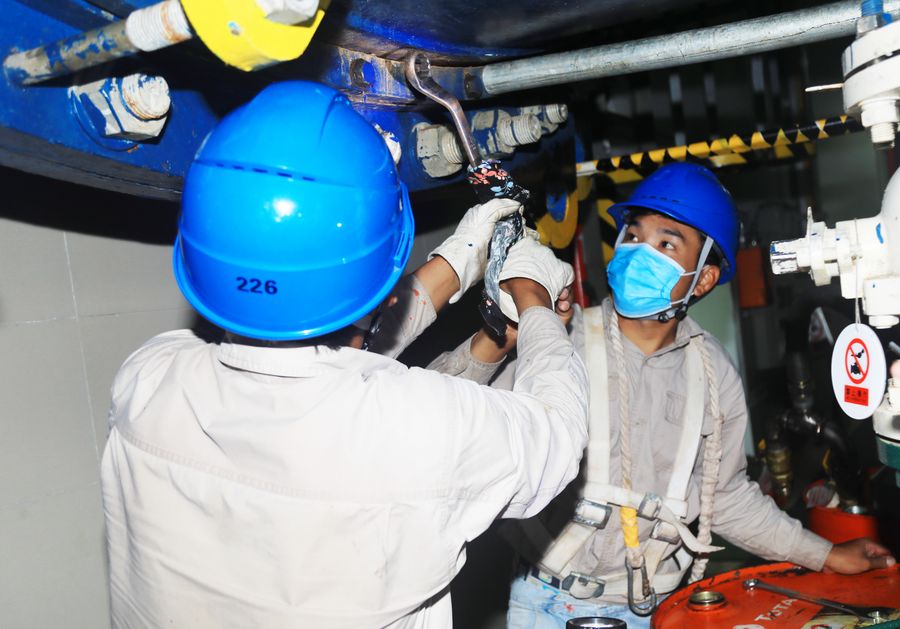
Chinese workers maintain equipment at the Lower Stung Russei Chrum hydropower station in southwestern Cambodia's Koh Kong Province on March 24, 2020. (China Huadian Lower Stung Russei Chrum Hydroelectric Project (Cambodia) Company Limited/Handout via Xinhua)
The China-Laos Railway is not the only project witnessing such strict preventive measures. In the jungles of southwestern Cambodia's Koh Kong Province, the Chinese-built Lower Stung Russei Chrum hydropower station also saw similar measures taken for safety operation.
"The safety of our staff is the precondition of normal operation. Strict measures have been adopted in our company, including thorough sanitation of vehicles, offices, and dormitories, frequent temperature tests, and mask-wearing requirements, among others," said You Yuansheng, deputy general manager of China Huadian Lower Stung Russei Chrum Hydroelectric Project (Cambodia) Company Limited.
"All people who returned from China after vacation should be quarantined for 14 days," You said.
The preventive measures also won support from local Cambodian workers, who, together with their Chinese colleagues, shot and posted videos on social media to promote public awareness of COVID-19.
In Indonesia, Zhang Kelei, project manager of Sinohudro Project Department of the Jakarta-Bandung High Speed Railway, said the department "has asked everyone to wear masks and reduce contact."
"The offices, accommodations and construction sites are fully enclosed, and all personnel entering and exiting are registered, disinfected and tested," Zhang said.
"We have also printed 3,000 copies of anti-epidemic prevention manual books in both Chinese and Indonesian, and distributed them to every Indonesian employee," he said, adding their Indonesian colleagues are also provided with face masks, disinfectant and other epidemic prevention materials, as well as epidemic subsidies.
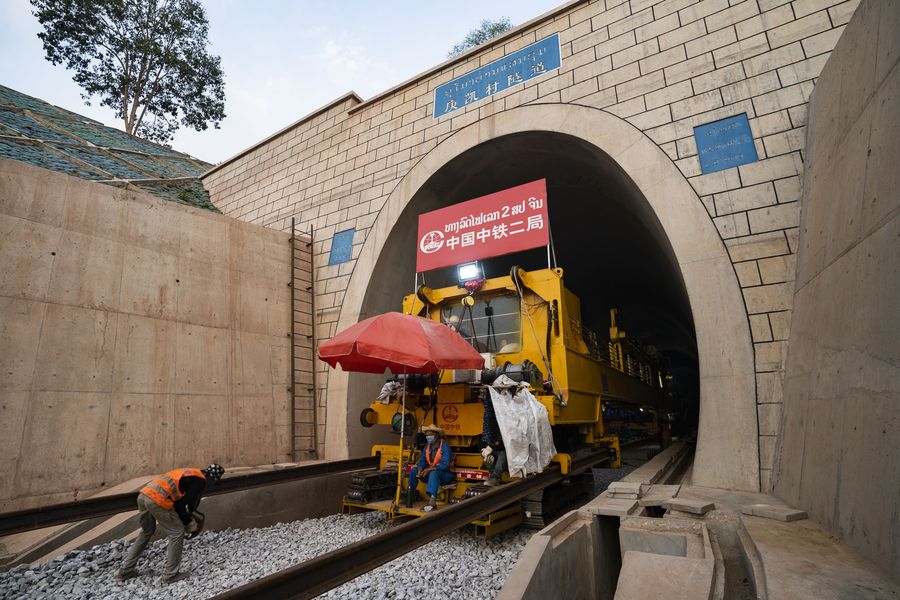
Chinese and Lao railway builders work together to lay the tracks through the Ban Nong Khay Tunnel of the China-Laos Railway in Vientiane Province, some 60 km to the north of capital Vientiane, Laos, May 23, 2020. (Photo by Kaikeo Saiyasane/Xinhua)
ORDERLY RESUMPTION
Despite shortage of hands and supplies, the Chinese and local workers and engineers have nevertheless managed to resume production in an orderly manner.
The CREC-2, which restarted work on March 27, has sped up its track-laying pace to one kilometer every day from two kilometers every three days.
By early May, the company had completed its track-laying of over 30 kilometers.
Besides, the railway's off-line bridges, tunnels, roadbeds and other civil engineering work have been almost finished, and online tracks, power, communication signal, mechanical and electrical engineering and station buildings have been fully launched.
"The tracks were laid so well that it's much comfortable to run on them," said Chen, the Chinese driver.
As for the hydropower station in Cambodia, it has been generating electricity normally since the COVID-19 outbreak in the country in March. The station has provided 75 million kilowatt-hours during the first four months of this year.
"We only have 94 Chinese colleagues on site right now. The shortage of hands is a big challenge. Therefore, we must unite and cooperate more closely to fulfill our duties at this special time," said You.
The staff have made a detailed plan to ensure the plant "will run safely at full capacity to provide reliable power for the socio-economic development of Cambodia," he said.
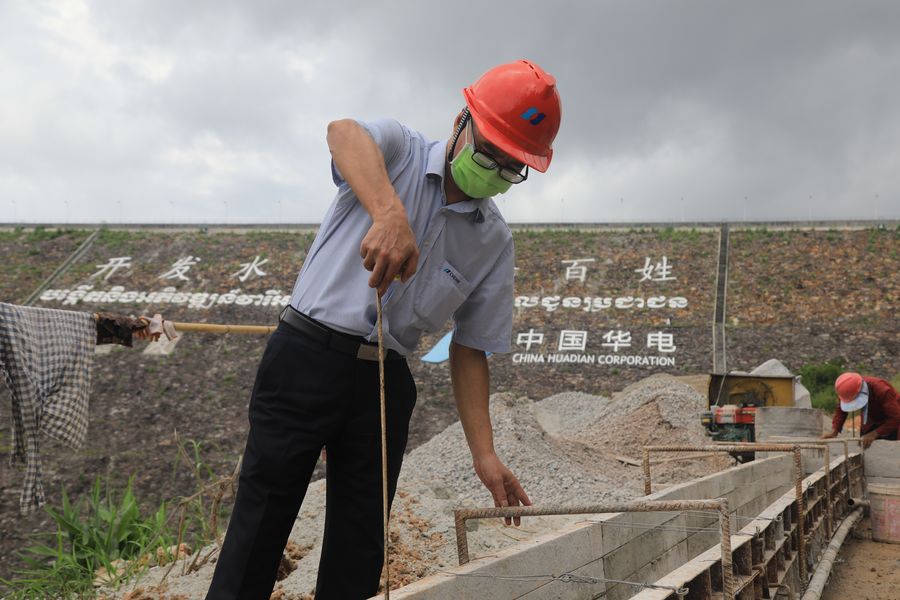
Luo Jianhua, deputy director of the Production Technology department of the Chinese-built Lower Stung Russei Chrum hydropower plant, works at a dam in Cambodia's southwestern Koh Kong province, May 23, 2020. (China Huadian Lower Stung Russei Chrum Hydroelectric Project (Cambodia) Company Limited/Handout via Xinhua)
Over the past several months, 50-year-old Luo Jianhua, deputy director of the Production Technology Department of the plant, and his colleagues have been examining key equipment like power units, generator transformers and flood discharging facilities to prepare for the coming rainy season.
"Rainy season is the best time for the hydropower plant to generate electricity, so we must keep our equipment in good condition," Luo said.
In Indonesia, 40-year-old Zhang said he was still on vacation in his hometown Xuzhou in eastern China's Jiangsu Province in the early days of the outbreak.
"The construction of the high-speed railway was in full swing. I was worried about the lack of manpower in the work area and the inability to coordinate supplies and equipment in time," said Zhang, who later flew back to Jakarta as soon as possible.
With the joint efforts of Zhang and many others like him, the construction of the railway has made great progress amid the epidemic. Three tunnels have been drilled through in the last few months. The first multi-span rigid frame continuous beam for the No. 2 Bridge of the railway was successfully closed in mid-May.
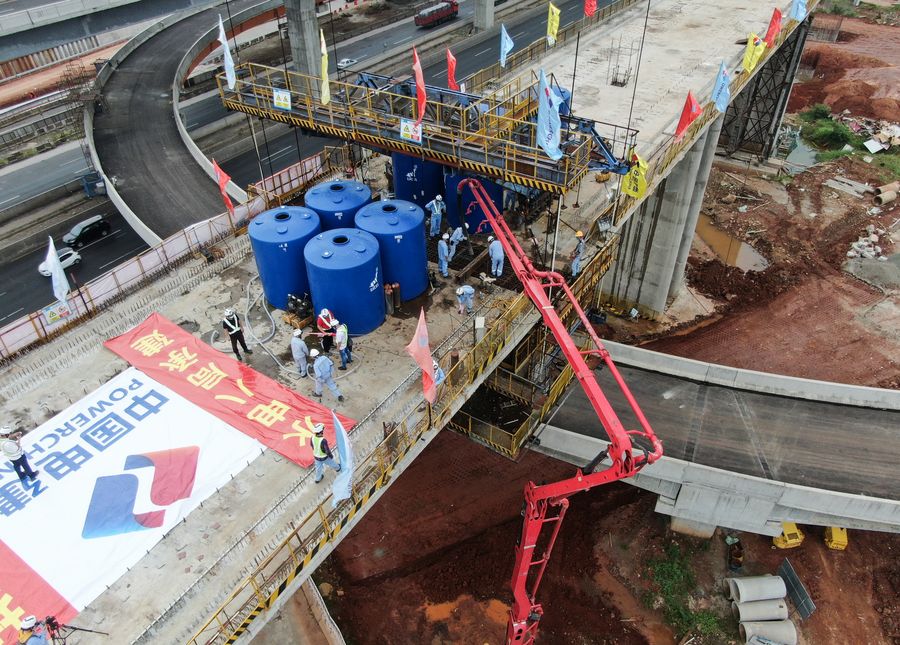
Aerial photo taken on May 10, 2020 shows the construction site of the first multi-span rigid frame continuous beam for the No. 2 Bridge of the Jakarta-Bandung High Speed Railway in Indonesia. (Xinhua/Du Yu)
BRIGHTER FUTURE
Ren Chengneng, general technical manager of the railing of the China-Laos Railway, told Xinhua that he was very happy to participate in the Belt and Road project at the end of his career.
He was not alone favoring the project.
While inspecting the main construction site of the railway in Vientiane, Lao Deputy Prime Minister and Finance Minister Somdy Douangdy spoke highly of the construction of the railway, calling it a carrier and symbol of the friendship between Laos and China.
Somdy vowed that the Lao government will, as always, support the construction of the railway and provide convenience for its construction.
"The Belt and Road Initiative plan may restart progressively and remains well-received in its partner countries," Cambodian Princess Norodom Arunrasmy told Xinhua in a recent interview.
Cambodia highly values the BRI since it is a new source of economic growth through infrastructure development, industrialization, trade and investment expansion, and tourism growth, said the princess.
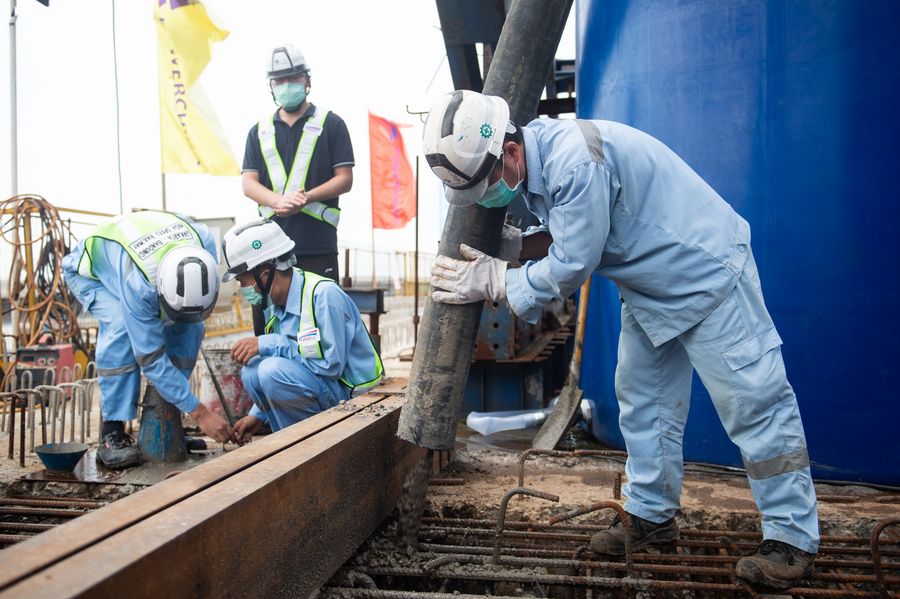
People work at the construction site of the first multi-span rigid frame beam for the No. 2 Bridge of the Jakarta-Bandung High Speed Railway in Indonesia, May 10, 2020. (Xinhua/Du Yu)
As for Kyrgyzstan's independent political analyst Igor Shestakov, the Belt and Road projects "can become one of the ways to quickly restore the economy" of Central Asian as well as Commonwealth of Independent States countries.
"Now China, at this difficult moment, can position the projects more successfully and more efficiently, as one of the ways to speed up the restoration of the national economies of the countries," Shestakov said.
Meanwhile, such confidence in Belt and Road projects has also been shared by officials and experts beyond Asia.
Noting that the BRI focuses on infrastructure projects and trade exchanges that are needed by developing countries, Hisham El-Zimaity, secretary general of the Egyptian Council for Foreign Affairs, said he believes that the initiative "will continue to offer a lot of impetus at the political and economic levels around the world."
The BRI "is vital and it will continue despite the ongoing pandemic," said George Tzogopoulos, an expert on China with the Begin-Sadat Center for Strategic Studies at Israel's Bar Ilan University. ■
(Video reporters: Zong Pingping, Chu Xiong, Mao Pengfei, Yu Qianliang, Wa Yang, Du Dapeng; Video editor: Chen Sihong)



